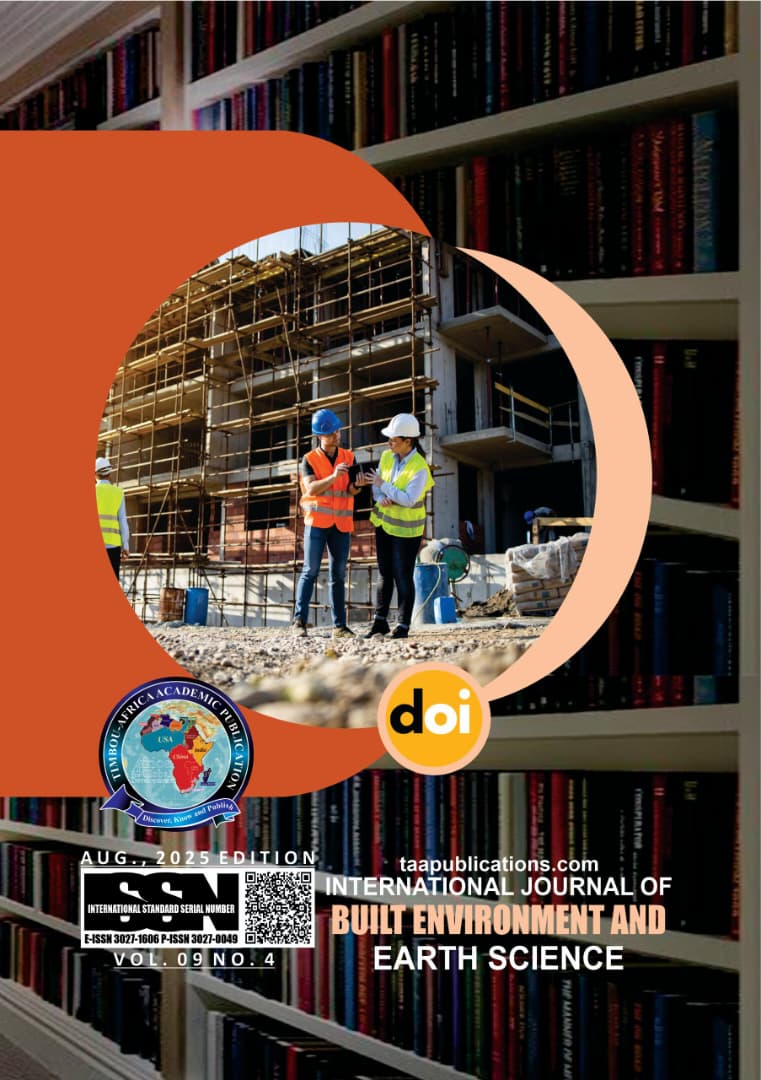GREEN ANALYTICAL CHEMISTRY STRATEGIES FOR URBAN WASTEWATER MONITORING OF EMERGING CONTAMINANTS: A MACHINE LEARNING AND MULTI-TECHNIQUE STRATEGY

Abstract
The increasing occurrence of new contaminants (ECs) like pharmaceuticals, endocrine-disrupting chemicals (EDCs), personal care products, and microplastics in urban wastewater treatment plants has raised gargantuan environmental and public health concerns, especially in fast-growing urban cities like Nigeria. Conventional analytical tools, although efficient, have the risk of employing toxic reagents, handling big samples, and demanding energy-hungry equipment. Therefore, this research pursues a green analytical chemistry (GAC) approach to design and validate low-cost, sensitive, and green methods for tracking ECs in wastewater in urban settings. A MultiTech Nique strategy was employed that combined solid-phase microextraction (SPME), dispersive liquid–liquid microextraction (DLLME), and microwave-assisted extraction (MAE) with high-end detection platforms like liquid chromatography-tandem mass spectrometry (LC-MS/MS) and Fourier-transform infrared spectroscopy (FTIR). These green chemistry and analytical sample preparation methods were developed to reduce energy requirements and solvent consumption and increase extraction efficiency and reproducibility. These selected ECs, i.e., acetaminophen, triclosan, bisphenol A, and carbamazepine, were screened in influent and effluent wastewater samples from three Lagos municipal wastewater treatment works, Nigeria. For the improvement of analytical performance and interpretation of results, PCA ML algorithms, RF, and SVM were incorporated into the workflow for contaminant classification prediction, pattern identification, and estimation of removal efficiency in treatment plants. The models were over 90% precise for contaminant classification and had good predictive capability for EC concentration. Findings indicated the extensive use of ECs in influent and treated wastewater, where some compounds surpassed ecotoxicological safety levels. Green analysis methods demonstrated similar or better detection capability than the traditional methods and met GAC requirements. In addition, ML-enhanced data analytics engaged more insight into contaminant behaviour and supported real-time decision-making to control water quality. This study highlights the potential for combining green chemistry concepts with smart data analytics in designing sustainable monitoring systems for low-cost ECs for urban wastewater. The study presents an applicable solution for developing countries to promote environmental monitoring, minimize ecological hazard, and support international initiatives toward UN Sustainable Development Goals (SDGs) 6 and 12.
Keywords
Emerging Contaminants, Urban Wastewater, Sustainable Monitoring, Solid-Phase Microextraction, Dispersive Liquid, Liquid Microextraction, Microwave-Assisted Extraction, Spectroscopy